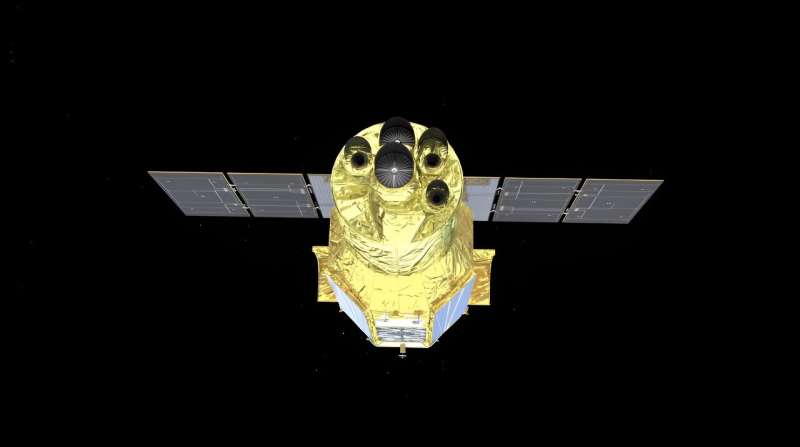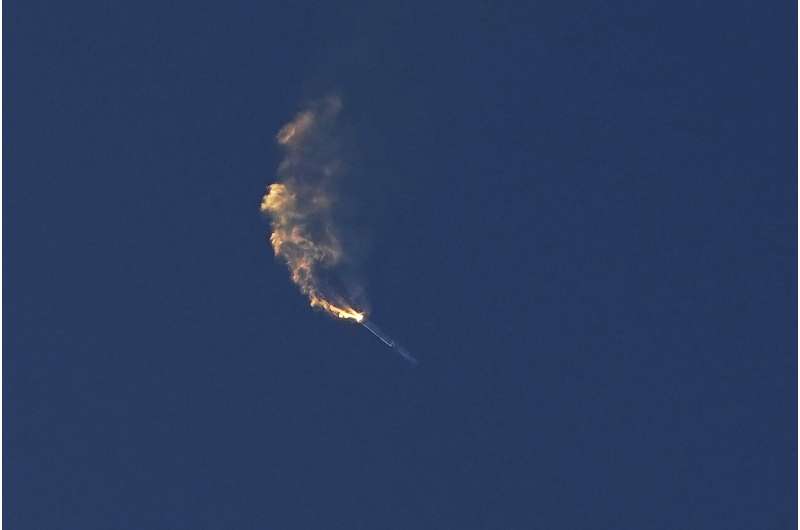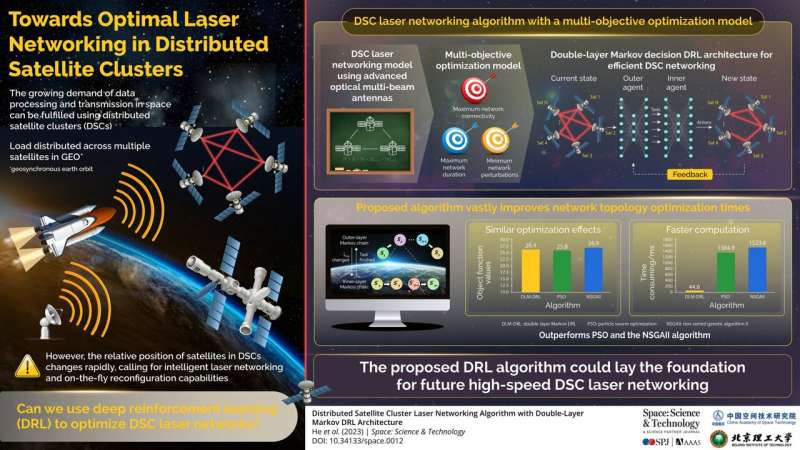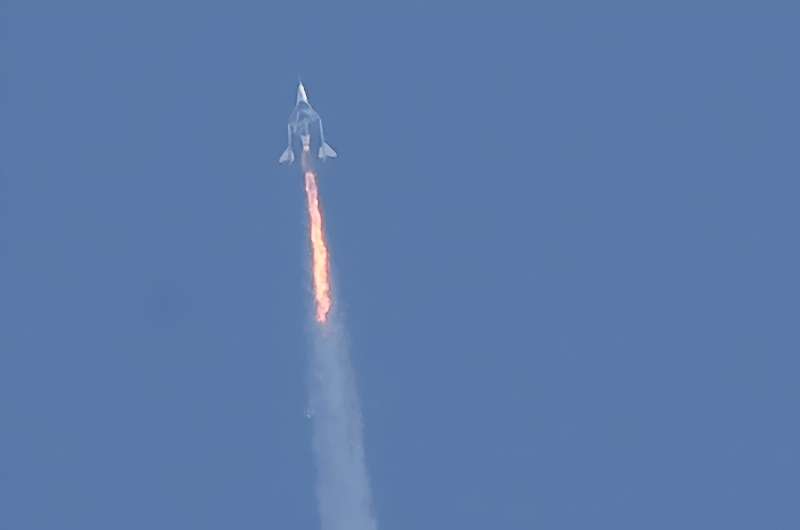
Copernical Team
XRISM satellite launches to study the universe in different colors of X-rays

On Sept. 6, a new satellite left Earth; its mission is to tell us about the motions of hot plasma flows in the universe.
Launched from Tanegashima Space Center in Japan, the X-Ray Imaging and Spectroscopy Mission (XRISM) satellite will detect X-ray wavelengths with unprecedented precision to peer into the hearts of galaxy clusters, reveal the workings of black holes and supernovae, as well as to tell us about the elemental makeup of the universe.
XRISM, pronounced "crism," is a collaborative mission between the Japan Aerospace Exploration Agency (JAXA) and NASA, with participation by the European Space Agency.
SpaceX's Starship to remain grounded after explosion probe
 SpaceX's Starship, the most powerful rocket ever built, must remain grounded while Elon Musk's company completes dozens of corrective actions to prevent a repeat of the spectacular explosion that marred its first orbital test flight, regulators said Friday.
The 63 steps include "redesigns of vehicle hardware to prevent leaks and fires, redesign of the launch pad to increase its robustness,"
SpaceX's Starship, the most powerful rocket ever built, must remain grounded while Elon Musk's company completes dozens of corrective actions to prevent a repeat of the spectacular explosion that marred its first orbital test flight, regulators said Friday.
The 63 steps include "redesigns of vehicle hardware to prevent leaks and fires, redesign of the launch pad to increase its robustness," SpaceX can't launch its giant rocket again until fixes are made, FAA says

Scientists study distributed satellite cluster laser networking algorithm with double-layer Markov DRL architecture

With the development of satellite networks, space-air-ground integrated networks, and the Internet of Things, the future giant constellations, high-resolution Earth observation, human-crewed spacecraft, space stations and other space-based information systems have put forward an increasingly urgent demand for large-capacity space networking and information transmission.
The space distributed satellite cluster (DSC) overcomes the resource constraints and technical bottlenecks of single-satellite platforms by using multiple heterogeneous satellites in the same orbit to cooperate with distributed payloads to achieve large-capacity high-speed networking and information transmission and exchange in space, providing an effective solution for the above-mentioned needs.
The high-speed variation of relative positions of multi-satellites in the same orbit and the visible state constraints of satellite-borne optical phased array antennas cause the topology of DSC to be dynamically time-varying and intermittent link interruptions. It is necessary to solve the problems of rapid topology reconstruction and dynamic continuous networking under these two situations.
Virgin Galactic notches fourth spaceflight in four months

Virgin Galactic on Friday announced it had sent three paying customers on an hour-long journey to space and back, racking up its fourth successful flight in as many months.
The private astronauts aboard the Galactic 03 mission were among the first people to buy their tickets from the company founded by British billionaire Richard Branson in 2004.
American real estate entrepreneur Ken Baxter, South Africa-born conservationist Timothy Nash, and British engineer and entrepreneur Adrian Reynard took their places aboard the rocket-powered spaceplane VSS Unity, along with Virgin Galactic's astronaut instructor Beth Moses.
"What a thrilling day for our three new private astronauts and the entire team at Virgin Galactic," said CEO Michael Colglazier.
Vodafone and Amazon's Project Kuiper to extend connectivity in Africa and Europe
 Vodafone and Project Kuiper, Amazon's low Earth orbit satellite (LEO) communications initiative, has announced a strategic collaboration through which Vodafone and Vodacom plan to use Project Kuiper's network to extend the reach of 4G/5G services to more of their customers in Europe and Africa.
Vodafone and Vodacom plan to use Project Kuiper's high-bandwidth, low-latency satellite network
Vodafone and Project Kuiper, Amazon's low Earth orbit satellite (LEO) communications initiative, has announced a strategic collaboration through which Vodafone and Vodacom plan to use Project Kuiper's network to extend the reach of 4G/5G services to more of their customers in Europe and Africa.
Vodafone and Vodacom plan to use Project Kuiper's high-bandwidth, low-latency satellite network Mexico's CFE TEIT taps SES's Mobile Backhaul Service via SES-17 to Boost Digital Inclusion
 Expanding on a partnership committed to close the connectivity divide across Mexico, CFE Telecomunicaciones e Internet para Todos (CFE TEIT) and SES has announced the delivery of voice and data services enabled by SES's Mobile Backhaul solution to 400 underserved, remote villages and communities across the country via the very high throughput SES-17 Ka-band satellite.
With the common goal
Expanding on a partnership committed to close the connectivity divide across Mexico, CFE Telecomunicaciones e Internet para Todos (CFE TEIT) and SES has announced the delivery of voice and data services enabled by SES's Mobile Backhaul solution to 400 underserved, remote villages and communities across the country via the very high throughput SES-17 Ka-band satellite.
With the common goal China publishes new datasets obtained by Mars, lunar probes
 China published two new batches of data on Monday, obtained by its Mars probe and lunar probe.
The scientific data obtained by three scientific payloads including a high-definition camera on Tianwen 1, the country's Mars probe, from January to March this year, have been released, amounting to nearly 68 gigabytes, according to the National Astronomical Observatories of the Chinese Academy o
China published two new batches of data on Monday, obtained by its Mars probe and lunar probe.
The scientific data obtained by three scientific payloads including a high-definition camera on Tianwen 1, the country's Mars probe, from January to March this year, have been released, amounting to nearly 68 gigabytes, according to the National Astronomical Observatories of the Chinese Academy o Effect of geometric porosities on aerodynamic characteristics of supersonic parachutes
 The safe landing of the probe is one of the most difficult challenges in Mars exploration, and the Mars supersonic parachute is extremely important for this process. To date, all the successful Mars exploration missions have used disk-gap-band (DGB) parachutes. However, the DGB parachute with the highest diameter of 21.35 m cannot be further used for future Mars exploration missions with higher
The safe landing of the probe is one of the most difficult challenges in Mars exploration, and the Mars supersonic parachute is extremely important for this process. To date, all the successful Mars exploration missions have used disk-gap-band (DGB) parachutes. However, the DGB parachute with the highest diameter of 21.35 m cannot be further used for future Mars exploration missions with higher Sea launch 1st by Chinese private entity
 Galactic Energy has become the first Chinese private company to carry out a sea-based launch mission.
The Beijing-based company announced on Tuesday evening that the sea-borne variant of its CERES 1 carrier rocket conducted its first liftoff at 5:34 pm that day from a mobile launch platform - a modified deck barge - in the Yellow Sea off the eastern province of Shandong. It then sent four
Galactic Energy has become the first Chinese private company to carry out a sea-based launch mission.
The Beijing-based company announced on Tuesday evening that the sea-borne variant of its CERES 1 carrier rocket conducted its first liftoff at 5:34 pm that day from a mobile launch platform - a modified deck barge - in the Yellow Sea off the eastern province of Shandong. It then sent four 































